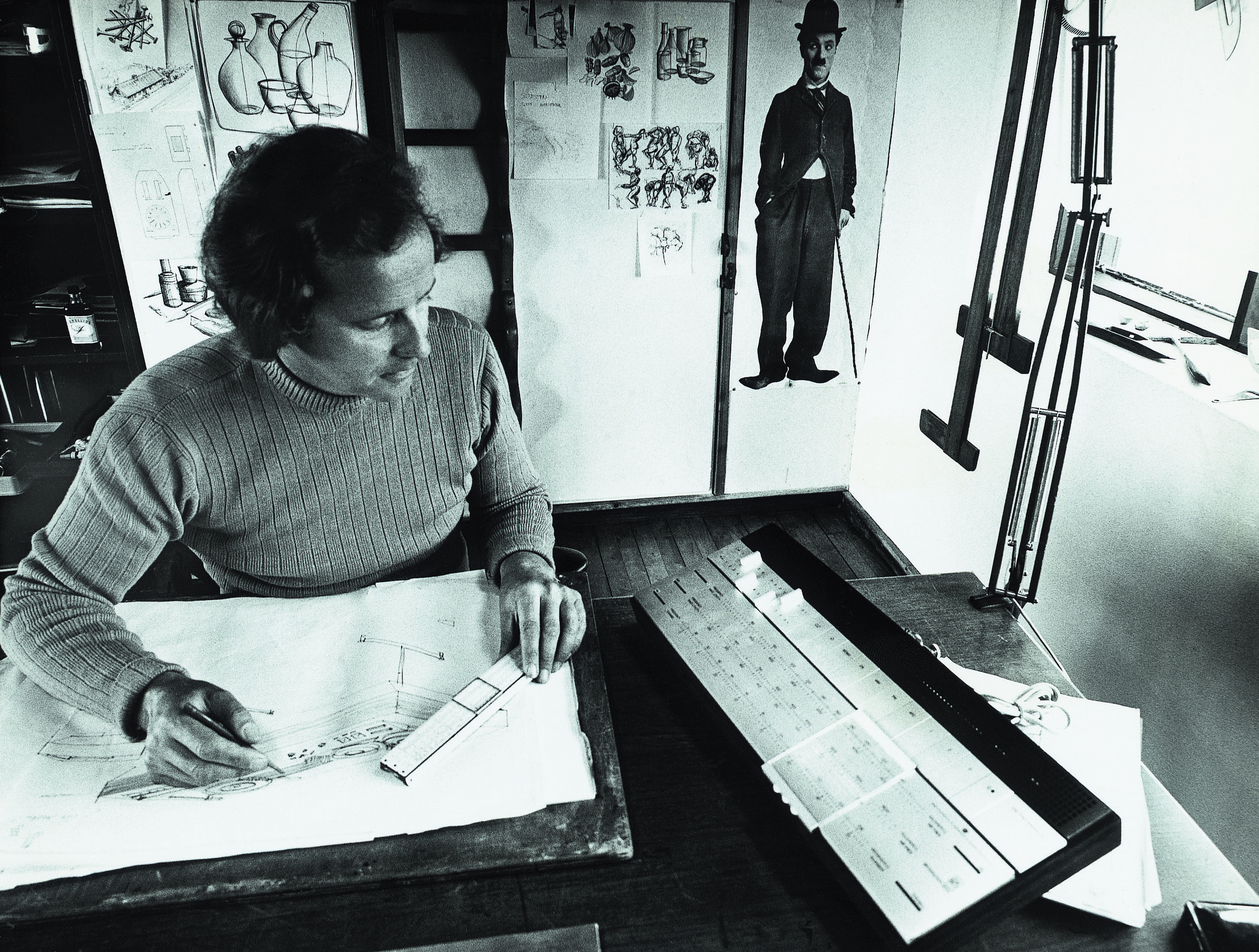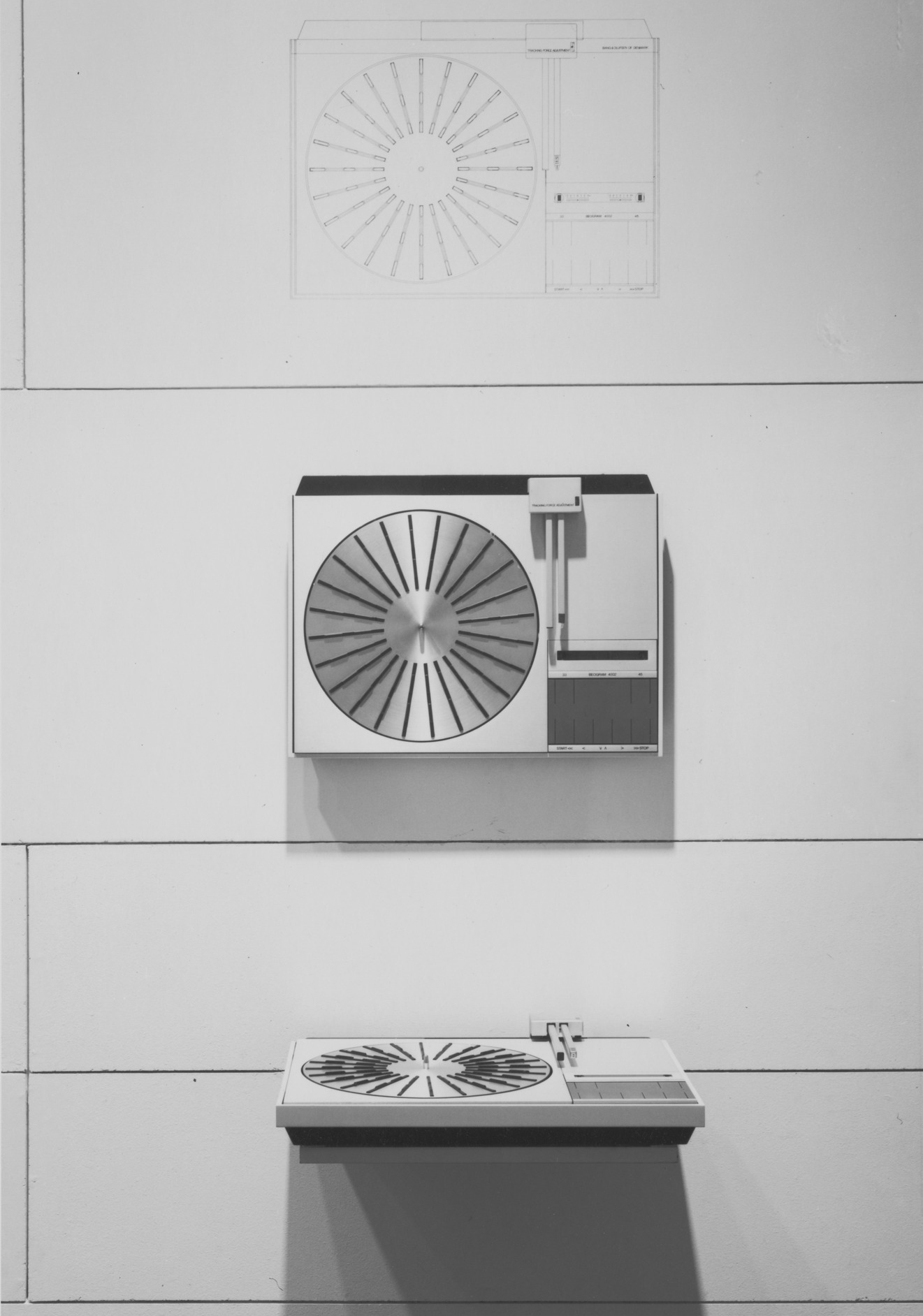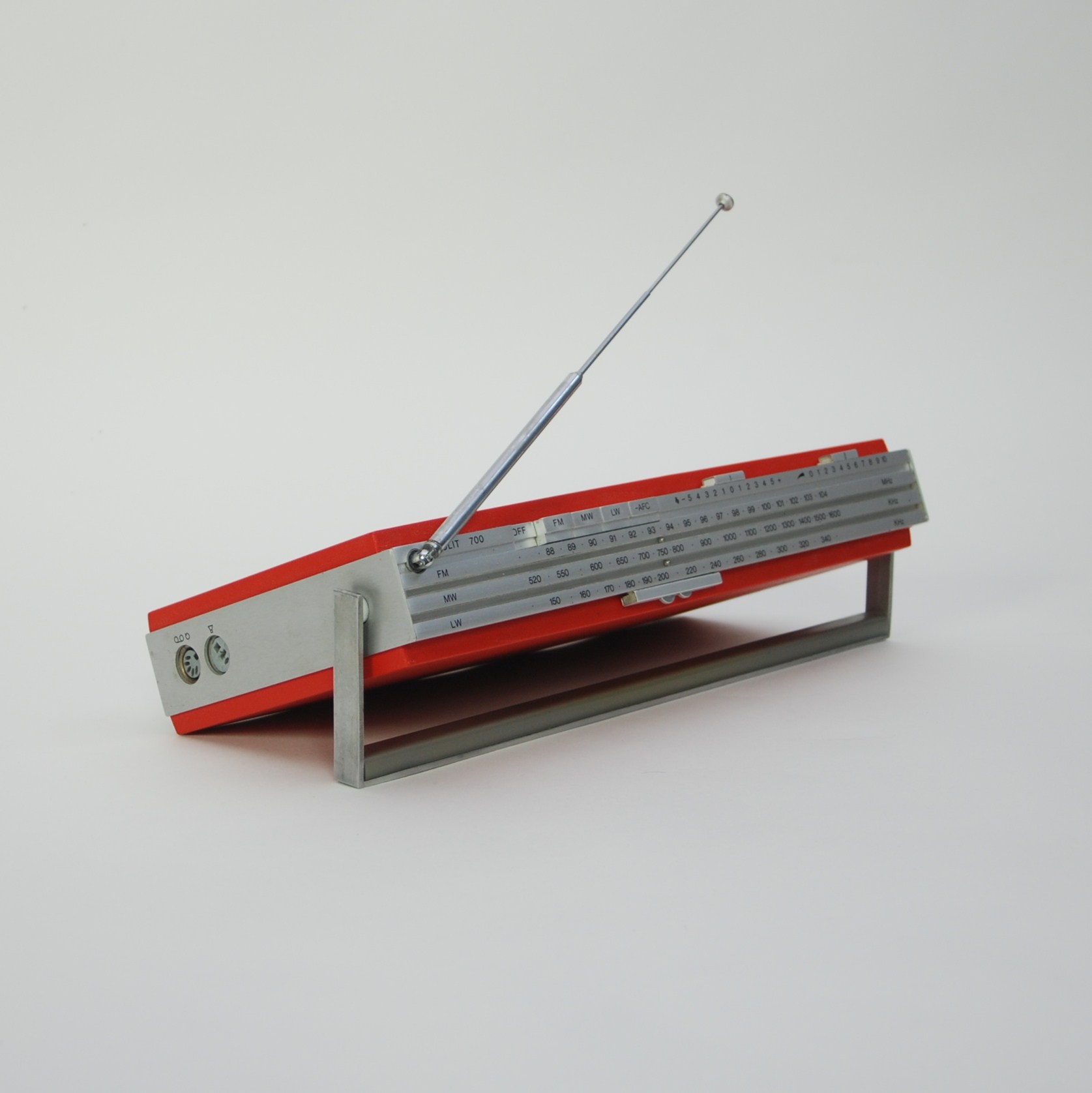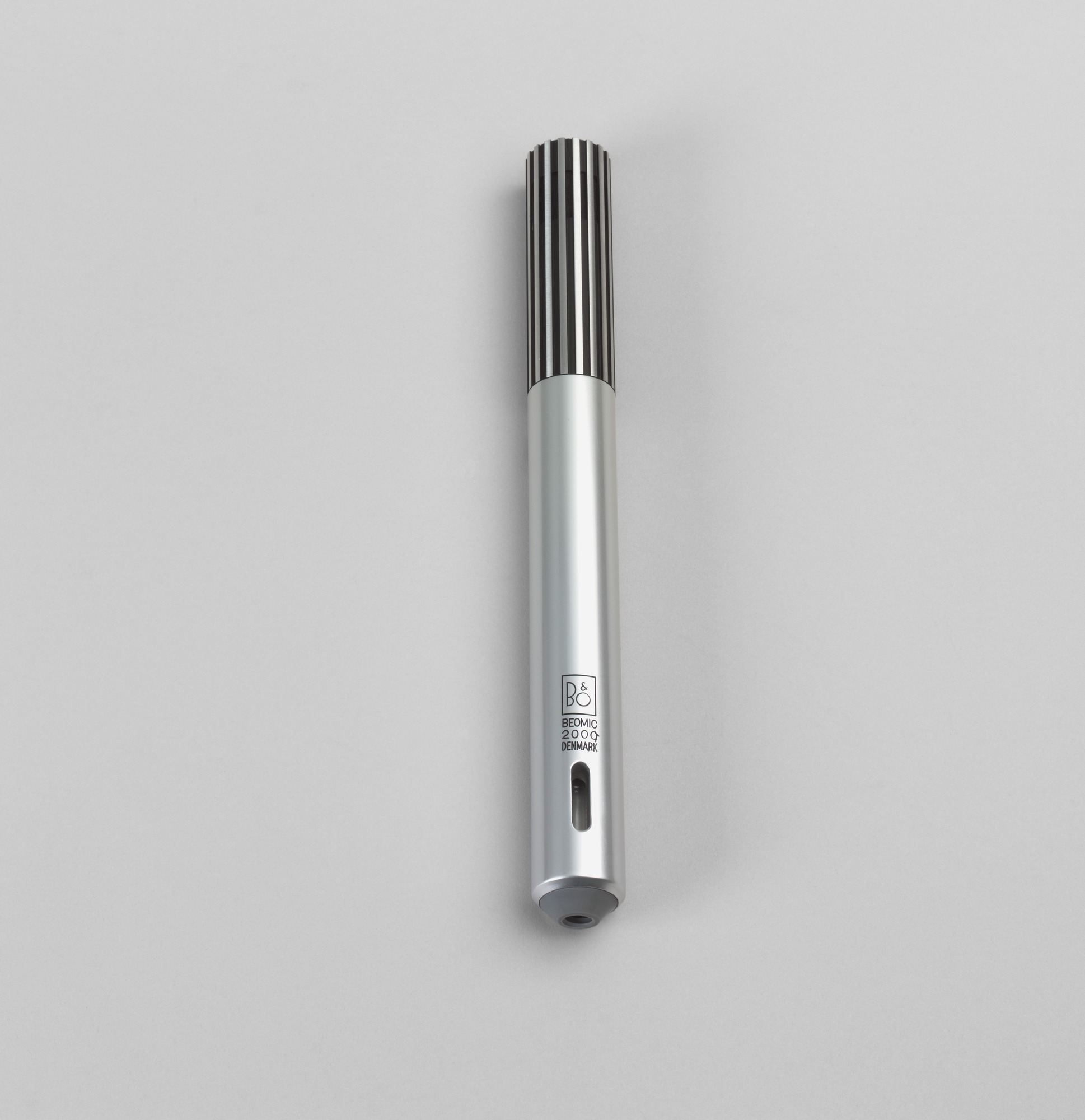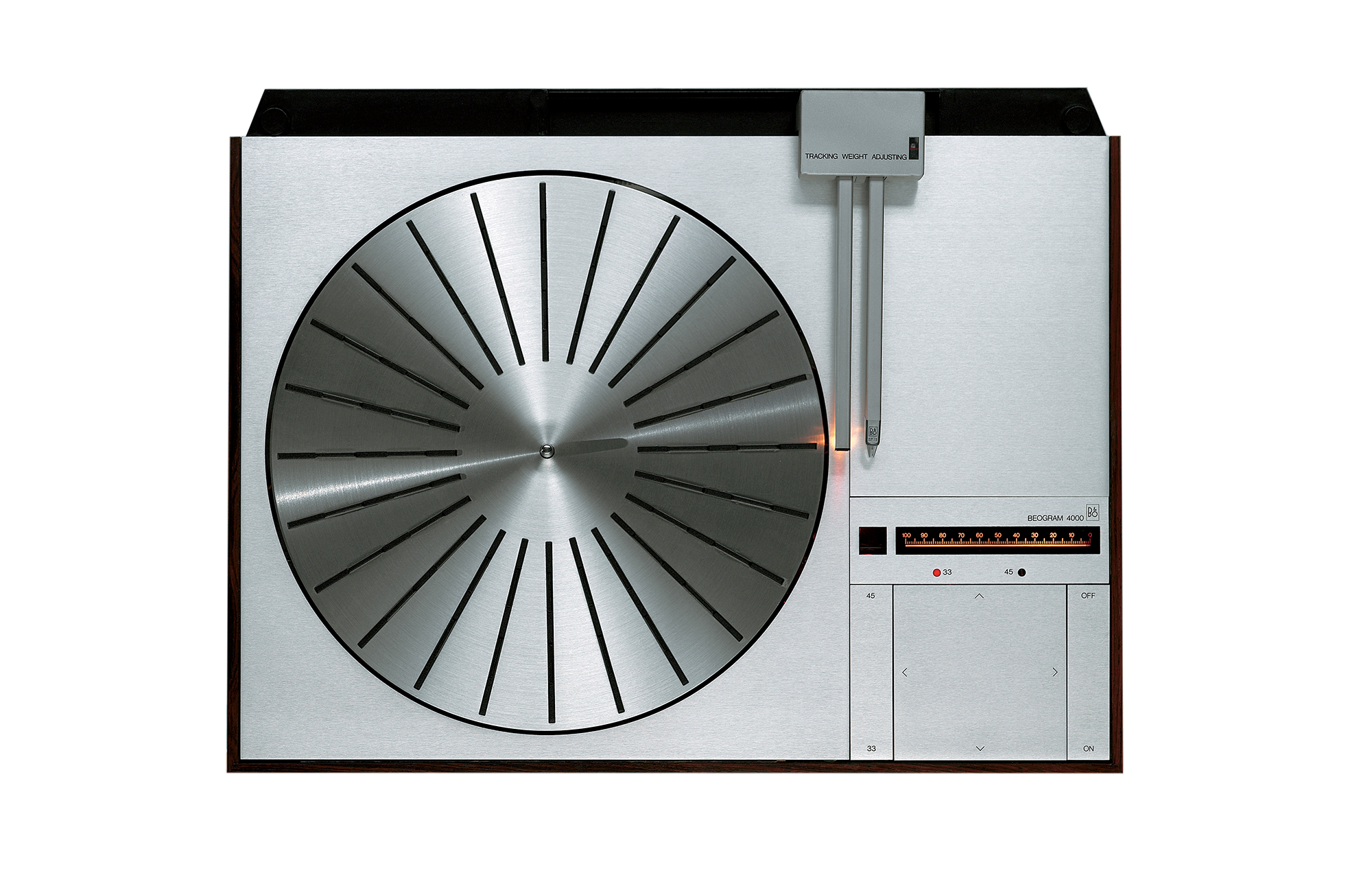Discover the legendary designer Jacob Jensen's era-defining Bang & Olufsen work, and how it brought the future into our present
Jacob Jensen in his studio at work on the Beomaster 1200, 1968.
Design Matters: ICONS
Jacob Jensen
For close to three decades, pioneering designer Jacob Jensen gave form to Bang & Olufsen's vision, consolidating its reputation as a world leader in sound and design. As part of our ongoing Design Matters series, find out more about his work, and how his legacy informs contemporary innovation at B&O PLAY.
Installation view of the Beogram 4000 record player at The Museum of Modern Art's exhibition "Bang & Olufsen: Design for Sound by Jakob Jensen", April 14–June 18, 1978, New York. Courtesy MoMA.
Past Futures
An old tongue-in-cheek quip about Bang & Olufsen products is that they seemed to fit more on the set of a science fiction movie like Stanley Kubrick's epic 2001: A Space Odyssey than in someone's home. But at the core of this light-hearted poke is a profound proposition: in many ways the small company based in the Danish countryside created the future of audio design. The designer Jacob Jensen collaborated with B&O to build that reputation for avant garde aesthetics and gain a worldwide following of enthusiasts who are as passionate today about all things “Beo” as they ever were.
It didn't take the advent of space travel (or time travel even) for the world to quickly grasp B&O and Jensen's radical vision. Soon after B&O started making products with Jensen at the design helm in the late 1960s – the exact same moment Kubrick's blockbuster classic was first released – the broad influence could be felt, leading design trends for decades to come. It wasn't science fiction as it turns out, but a roadmap for future generations, and inspiration for what B&O PLAY does in the contemporary era. This is part of that story.
Look of Danger
Jensen was once asked how he came to work for B&O. As he related, someone from the company saw a product he had designed for General Electric and said “we had better get hold of this guy because this looks like danger.” This was 1964, and the start of a nearly 30 year relationship which established Jensen as one of the foremost designers of his generation, and consolidated B&O’s reputation for matching design innovation with beautiful sound – an aesthetic that continues to inspire generations of designers and design lovers alike.
An Upholsterer Of Great Potential
Born in Copenhagen, Denmark in 1926, Jensen left school at thirteen and trained as an upholsterer. Bored by the humdrum tasks at his father's workshop, the young Jensen started messing around, making designs and models of everyday items. These eventually caught the eye of an architect who told Jensen’s father that the unusual furniture designs clearly came from someone with great potential. Spurred on by this encounter, Jensen attended the Danish School of Arts and Crafts in the late 1940s, where under Jørn Utzon's tutelage Jensen was the first graduate in the new discipline of industrial design. He continued to ride the wave of this movement and in 1951 started working for Bernadotte & Bjørn – Denmark's first industrial design studio.
Jacob Jensen's Beomaster 1200, 1969
““The spirit of Bang & Olufsen is that they say, ‘we like it, we believe it, we will do it anyway, we will take the chance and do it.’””
X-Ray machines, typewriters… and beyond!
In the seven year period he was with Bernadotte & Bjørn, Jensen designed everything from cooking equipment to porcelain dishes, X-Ray machines, typewriters and intercom systems. His melamine Margrethe Bowl is still in production today. Seeking broader horizons he moved to the US where, alongside qualifying as a sailor for the Olympic Games, continued to work on a bewildering array of products for the likes of General Electric among others.
Before long Jensen returned to Denmark, setting up his own practice there in 1958 (appropriately named Jacob Jensen Design, and still running today, under Jacob's son). Soon Jensen and B&O crossed paths, and the rest is history.
Introducing: Beomaster 5000
Jensen’s first complete product for B&O was the Beomaster 5000 tuner and amplifier, which was released in 1967. Jensen credited B&O's Roderik Madsen for the vision in taking on a revolutionary new design – as Jensen put it, “I think this is probably one of the fantastic things about Bang & Olufsen that they saw a possibility to get away from everybody else. The spirit of Bang & Olufsen is that they say, ‘we like it, we believe it, we will do it anyway, we will take the chance and do it.’”
Jacob Jensen's innovative Beogram 4000 record deck, with its distinctive double tone arm, 1972
““If we had made a compromise, Bang & Olufsen wouldn’t exist. It is as simple as that.””
Beomaster 1900-2, 1979
Landmark Design
This spirit of innovation and experimentation continued as Jensen's partnership with his fellow B&O designers and engineers deepened. Together, they created landmark B&O designs that challenged the hegemony of the big multinational corporations. With every new Jensen product came a story of collaboration and creativity: the Beogram 4000 turntable with its revolutionary twin arms, designed in the home basement of aero engineer Karl Gustav Zuethen, or the Beocenter 9000 which went through nearly 80 conceptual designs before its final incarnation. His U70 headphones, meanwhile, were the company's first. They, along with 27 other of his B&O designs, were included in a 1978 exhibition at New York's MoMA (Museum Of Modern Art), “Design For Sound”. Reviewing the show, The New York Times wrote that the objects displayed “are enough to earn him major rank among the 20th century’s industrial designers.”
They Zig we zag
Throughout his career, Jensen worked to a philosophy of trying to be as pioneering as the limits of materials and technology available would allow – he defined it as “Different but not strange.” Jensen also designed hundreds of products outside of B&O, including the Jojo cable reel that are still recognisable as much copied archetypes today. His watches, made from high-spec titanium with simple faces and rubber or leather straps, remain bestsellers (indeed, Jensen's son, Timothy Jacob Jensen designed a watch for B&O in the early 90s after he took the reigns of the family business). All were made from his unique understanding of the designer's struggle. As Jensen once explained, “Constructing a fountain pen, writing a poem, producing a play or designing a locomotive, all demand the same components, the same ingredients: perspective, creativity, new ideas, understanding and first and foremost, the ability to rework, almost infinitely, over and over. That ‘over and over’ is for me the cruelest torture.”
B&O U70 headphones, 1978
Beowatch, 1993 – designed by Jensen's son, Timothy Jacob Jensen
Keep An Open Mind
Those years of designing hundreds of products for home use gave Jensen the core aesthetic nous that, unleashed by the open-minded policies of Bang & Olufsen, were able to realise designs still in use today by simple re-imaginings of the basic form. His speaker designs, such as the Beolab 5000 cubes, took the most elemental forms of design and through simple twists created new forms, and anticipated the B&O portable Bluetooth speakers that are market leaders today.
Jensen understood that just as sound from B&O products fill the room, the devices from which the audio emanates are a fixtures of a space that ought to look as beautiful as any other item. These elemental values can be seen (and heard) in Bang & Olufsen products such as the A9, A1, P2 and others.
Jacob Jensen at home in Jutland, Denmark, a week before his death in 2015. Photo courtesy Alastair Philip Wiper.
New Horizons
After 234 products and 27 years with Bang & Olufsen, Jensen retired in 1989 and returned to his lifelong love of sailing. He passed away in 2015, only days after the above photograph was taken by Alastair Philip Wiper for his book, The Art Of Impossible: The Bang & Olufsen Design Story. His legacy at B&O was a clean, minimalist design based around aluminium, silver and wood, as well as ease of use, aspects that continue to inspire new B&O PLAY products today – a direct line from European modernism and the Bauhaus movement to the contemporary home and workspace.
It was a vision only possible with the most uncompromising and creatively truthful of partnerships. In the mid-90s Jensen reflected on what had made this collaboration such an effective one. “If we had made a compromise of giving up, Bang & Olufsen wouldn't exist,” he said. “It is as simple as that.”
Find out more about Jacob's life and work in his own words through the Engineering & Technology Wiki Oral History project, in an interview conducted in 1996 by Frederik Nebeker, IEEE History Center, Hoboken, NJ, USA.
There are a number of online resources run by Beofans on the history of B&O products, including Beoworld and Beocentral.
And, of course, you can check out B&O PLAY's contemporary audio design here.



